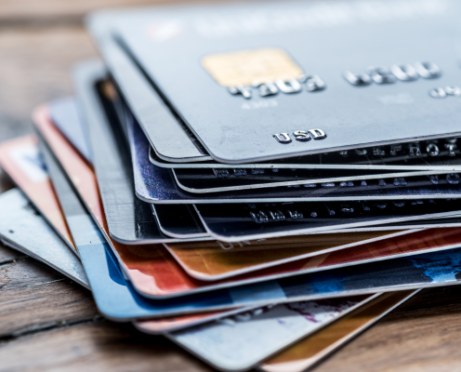
I love credit card rewards programs because they pay for most of my family’s annual vacation costs. But it’s taken me years to learn the ins and outs of my programs in order to truly take advantage of the credit card rewards. There are tons of details, and if you don’t research your program, you could end up throwing away what you’ve earned. Here are five ways you may end up wasting your points if you’re not careful:
1. Letting Credit Card Rewards Expire
I’ll be honest: I’ve let a point or two expire in the past. However, letting your points expire can be crushing if you were saving them up for a particular purchase. It’s possible that hundreds of dollars of your rewards could disappear simply because you didn’t realize you weren’t following the program’s guidelines. While this isn’t a concern with all programs, many of them do allow points to expire if you don’t follow a few rules.
Some credit card rewards programs require you to earn points at least once a year to keep them from expiring. Others simply require some sort of activity — such as redeeming rewards — to keep your points intact. Read the terms and conditions of your program to learn how to avoid loosing your points.
2. Hitting a Rewards Cap
Some credit cards offer excellent cash-back rewards for spending money in certain categories. These category bonus cards aren’t always as good as you may think. Sometimes the bonus categories limit how much you can earn each year, then give you a smaller rewards rate on all purchases over that limit. Fortunately, I’ve never hit a rewards cap. Of course, not everyone is so lucky.
Two great examples of this are the Chase Freedom card and the Blue Cash Preferred Card from American Express. The Chase Freedom card allows you to earn five percent cash back in bonus categories that rotate quarterly, but you can earn the five percent only on the first $1,500 in purchases each quarter in all of the categories combined.
Meanwhile, the Blue Cash Preferred Credit Card offers six percent cash back on purchases at U.S. supermarkets, but only on the first $6,000 in purchases each year. For both cards, the rate you earn after hitting the spending cap is just one percent. If you continue to put purchases in those categories on your card, you’ll be wasting the additional rewards that you could have earned using a different card.
3. Redeeming Points for Gift Cards
While every credit card rewards program is different, it is almost always a bad idea to redeem your rewards for gift cards. Before I was knowledgeable about my rewards programs, I redeemed points for $500 in Home Depot gift cards. Unfortunately, I could have gotten more value if I had redeemed my points in other ways.
These days, gift cards can often be purchased at a discount. You even get a small discount, such as two percent cash back, if you buy a gift card with a rewards credit card.
Why would you want to use points to get something that you can get for less elsewhere?
To make things even worse, gift-card redemptions sometimes result in a lower point value than other redemption options, such as travel purchases, point transfers to a travel partner, or statement credits.
Redeeming your points for a gift card usually isn’t the worst mistake you can make, but it’s still often a waste of points.
4. Redeeming Travel Points for Cash
Specific travel rewards credit cards give you rewards that are best used for travel purchases. For example, with the Capital One Venture card, your miles are worth one cent each if you redeem them for a statement credit to offset a travel purchase, which isn’t a bad deal.
What is a bad deal is redeeming those same miles for a statement credit for non-travel purchases. If you fall into this trap, your miles will be worth only half a cent per mile.
5. Ignoring Transfer Partners
Some credit card rewards programs allow you to transfer the points you earn to other frequent-traveler programs. It’s complicated to look into all transfer partner programs, but doing so can get you more value for your points.
The Chase Sapphire Preferred card is a prime example. For instance, if you wanted to, you could transfer Chase Ultimate Rewards points to Southwest’s Rapid Rewards program at an even one-to-one ratio. Doing so will allow you to get even more value for your points, as Southwest points are valued at 1.5 cents apiece by the Points Guy. Redeeming those same points for a statement credit would get you a value of only one cent per point or for travel through Chase’s Ultimate Rewards portal would get you only 1.25 cents per point.
The Bottom Line
I can’t blame anyone for unwittingly wasting points. But now that you know more about what to look out for so that you can truly take advantage of credit card rewards, hopefully you won’t fall into the same traps that I did.









